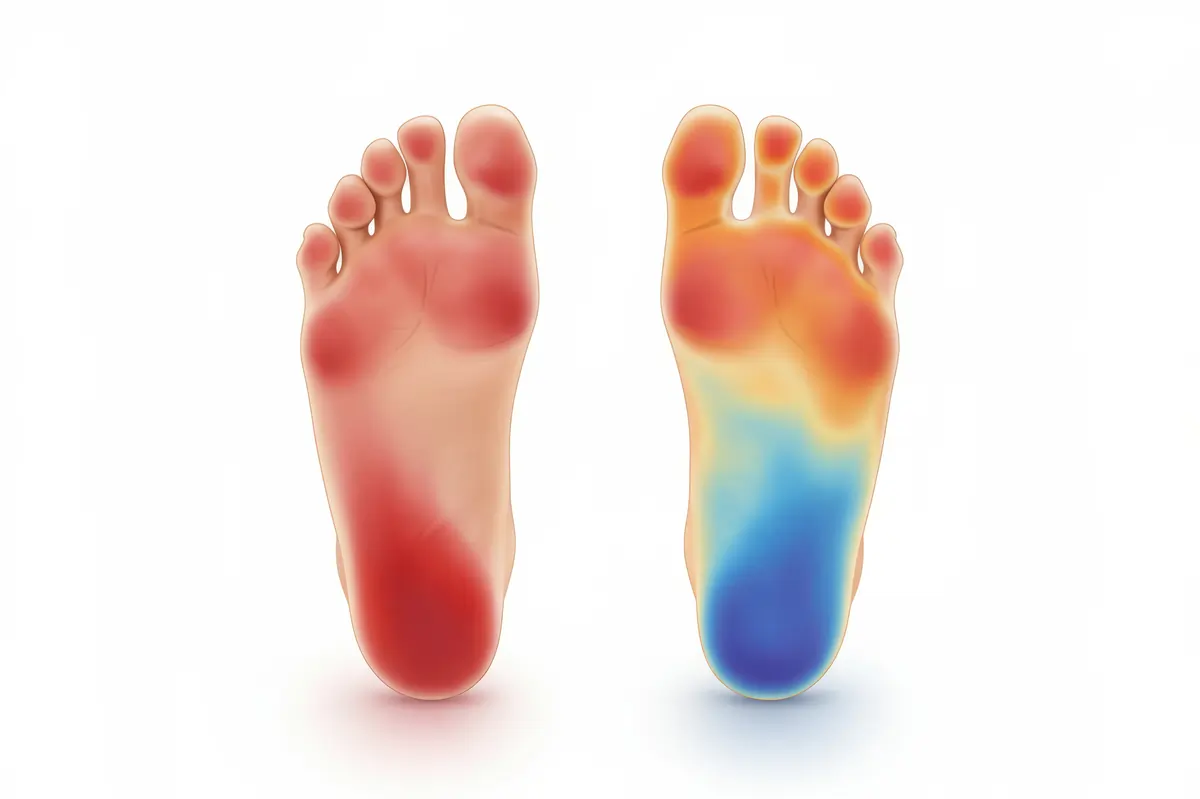Causes
Posterior tibial tendinitis may be caused either by an acute (sudden) injury or from overuse, but typically results from tears in the tendon due to repetitive strain. Over time, the arch will begin to flatten, increasing strain on the tendon. Left untreated, posterior tibial tendinitis may develop into posterior tibial tendon dysfunction. Risk factors include participation in sports with high impact on the feet such as soccer, tennis, or basketball, being female, being over 40 years of age, suffering from obesity, diabetes, hypertension, or prior ankle or foot injuries, and particularly repeat injuries to the foot or ankle.
Symptoms
For most patients, posterior tibial tendinitis starts slowly with pain and swelling along the inner side of the ankle and arch. Although the tendon is responsible for supporting the arch of the foot, most patients feel pain in the arch, heel, and midway up the inner side of the calf. Pain is present in all of these places because the posterior tibial tendon has its origin in the calf along the bag of the tibia bone, then stretches down around the inner side of the ankle, and into the arch. Pain and swelling are often worse at the origin in the calf and the insertion in the arch, but may be felt anywhere along the way.
Initially, pain may only be present during exercise, but over time will become persistent while standing or walking for long periods of time, and if left untreated may be present even at rest. As posterior tibial tendinitis progresses, the tendon may progress from simply being swollen to having a full or partial tear. Eventually, pain will be present at all times and may begin to interfere with your gait (the way you walk). Once the pain begins to interfere with gait, you may begin to experience knee or hip problems as your body naturally compensates for the pain caused by your tendon injury.
Diagnosis and treatment
For proper diagnosis, you will need to see your podiatrist at Kansas City Foot Specialists for a physical examination of your foot, a discussion about your symptoms and activities, and possibly an MRI or ultrasound of the foot. During your initial examination, your podiatrist may ask you to stand on your tip-toes on each foot. A hallmark sign of posterior tibial tendinitis is significant weakness in one foot during the tip-toe test. Patients with advanced posterior tibial tendinitis may not be able to lift the heel off the ground at all, or may only be able to lift the heel a small amount.
As with many other foot and ankle problems, treatment for posterior tibial tendinitis typically starts conservatively, but your individual treatment plan will depend on how far advanced your tendinitis is. You may be prescribed non-steroidal anti-inflammatory medications, physical therapy, rest and ice, or immobilization with a walking boot or cast. After several weeks of treatment, you will be re-examined to determine whether your current treatment has been sufficient, needs to continue, or if a more aggressive approach is needed. If conservative treatments fail to offer relief, surgery may be required. Surgical repair is more common when the tendon is significantly weakened and strength has not improved with conservative treatment. After surgery, the foot and ankle will be immobilized for a period of time, and physical therapy will slowly be introduced.
With or without surgery, treatment for posterior tibial tendinitis may take anywhere from several weeks to an entire year. After treatment, whether you have had surgery or not, you will most likely need to use custom orthotics or special shoes for the rest of your life in order to provide adequate support to the affected arch. This is a small price to pay when considering that not treating posterior tibial tendinitis can lead to debilitating, permanent loss of strength and flexibility in the foot.
Ready to learn more?
If you have arch, heel, ankle, or calf pain, call Kansas City Foot Specialists today at 913-338-4440 to schedule an appointment with your podiatrist. It’s our goal to provide you with the highest level of care in order to keep you and up and going long into the future.



